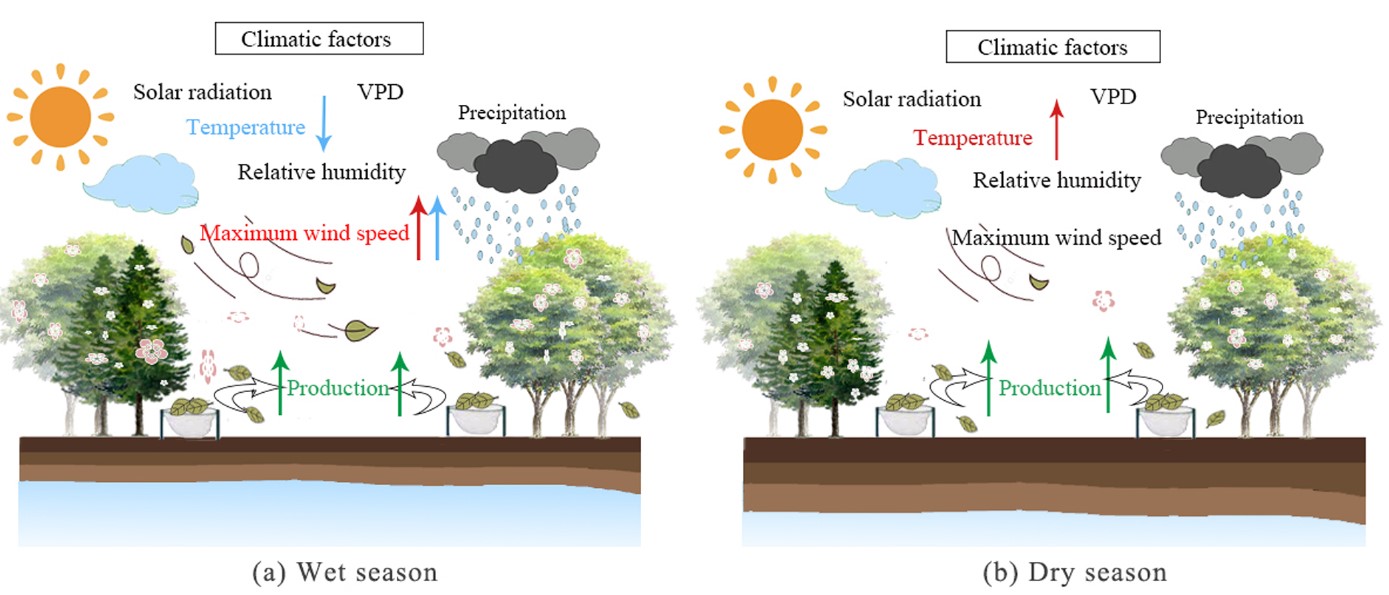Climatic drivers of litterfall production and its components in two subtropical forests in South China: A 14-year observation
Forest litterfall, an important indicator of forest productivity and function, is not only an important source of organic matter formation in forest soil, but also an important pathway for material cycling and energy flow in forest ecosystems. Therefore, it has always been a hot topic in forest ecology research. Against the backdrop of global climate change, including changes in regional precipitation and heat patterns and the increase in the frequency or intensity of extreme climate events, forest litterfall yield, composition, and temporal distribution will undergo profound changes, which further deeply affect a series of physical and chemical processes and ecological service functions of terrestrial forest ecosystems.
Relying on the long-term monitoring (2005-2018) of forest litterfall and its components by Dinghushan Forest Ecosystem Research Station, the researchers from South China Agricultural University, South China Botanical Garden (Chinese Academy of Sciences), and Sun Yat-sen University, investigated the composition and long-term dynamic characteristics of litterfall in monsoon evergreen broad-leaved forest and coniferous broad-leaved mixed forest, and revealed the profound effects of temperature and extreme wind speed on forest litterfall yield and its different components (Temperatures, especially high temperature, affects litterfall formation in the wet season and promotes litterfall in the dry season, showing different seasonal characteristics; Extreme wind speed significantly increases the proportion of branches in the total litterfall, but has no significant impact on the annual total litterfall). These findings advance our understanding of the modeling and estimation of carbon and nutrient cycling in subtropical forest ecosystems under climate change conditions, which will aid the sustainable management of subtropical forests.
This research has been published in Agricultural and Forest Meteorology. For the detailed information, please see https://doi.org/10.1016/j.agrformet.2023.109798

Figure 1. Illustration of the main climatic drivers of the litterfall production in different seasons for two forest types.
The red arrow indicates the normal wet and dry season. The blue arrow indicates the wet season excluding typhoon disturbances.
File Download: